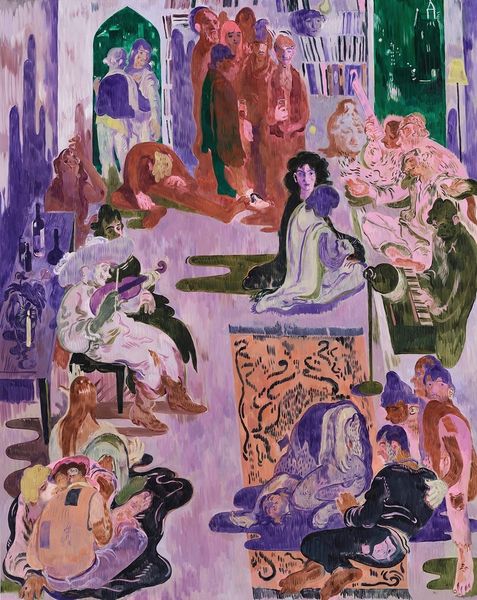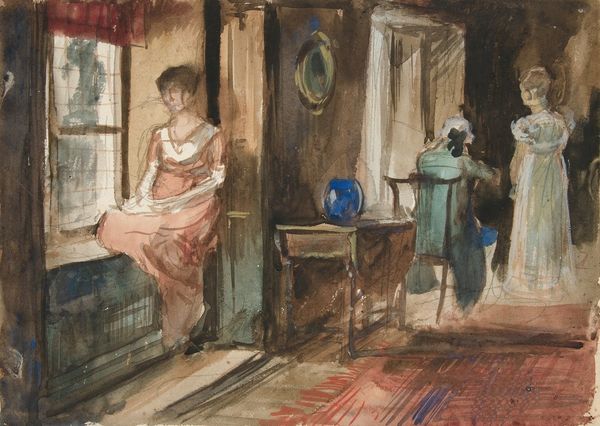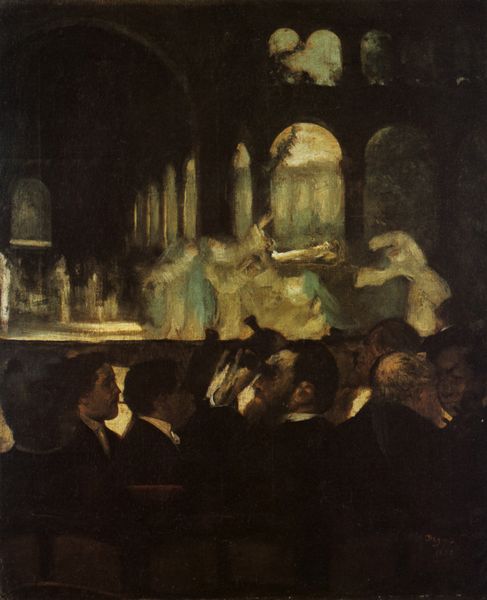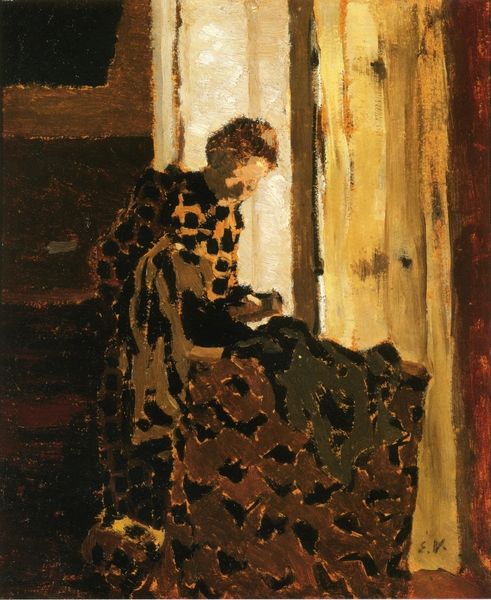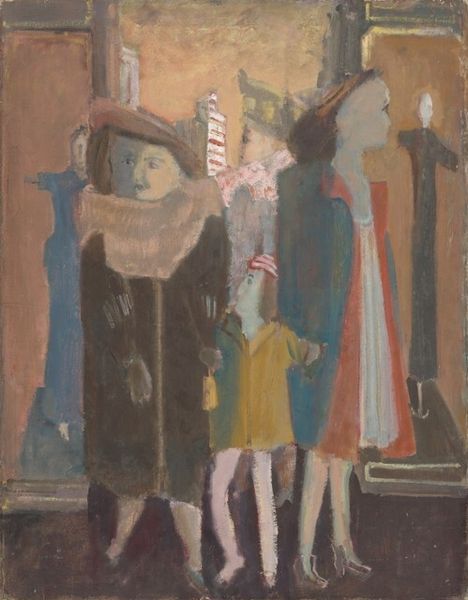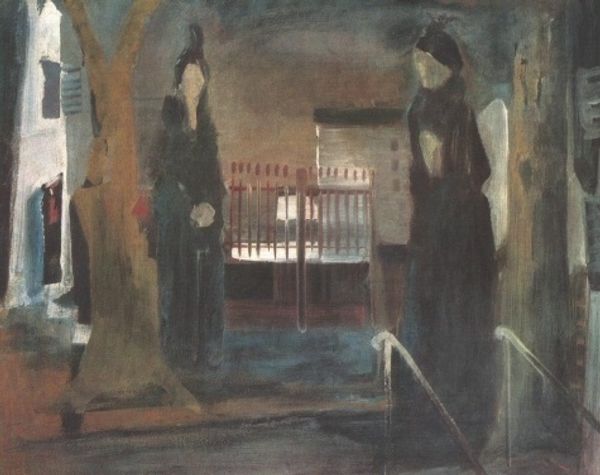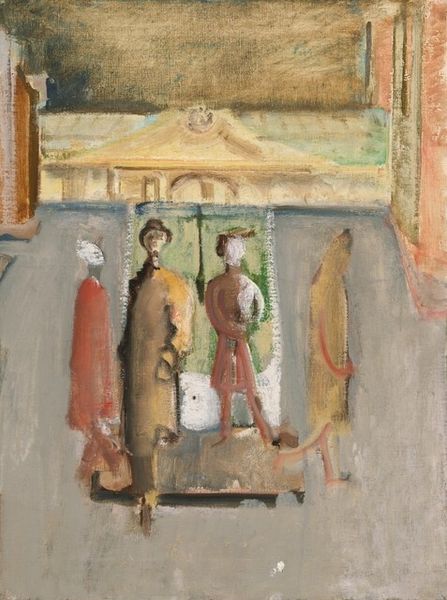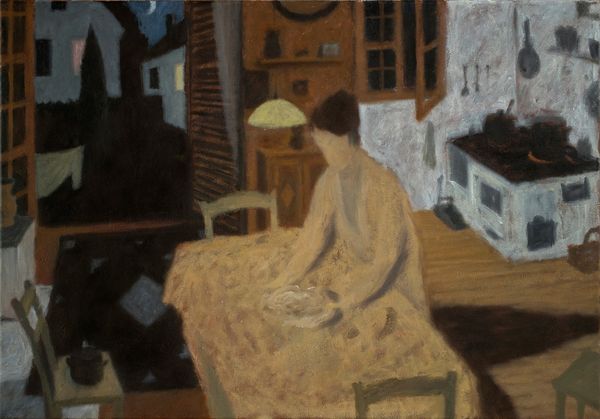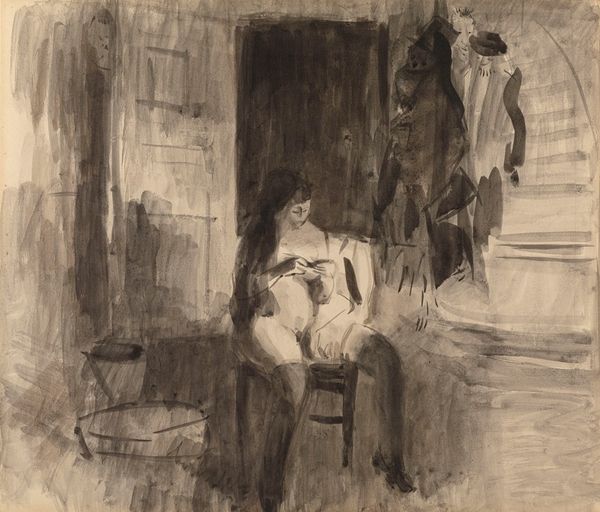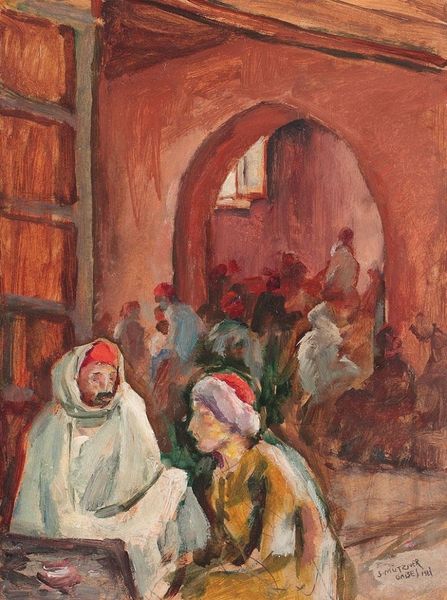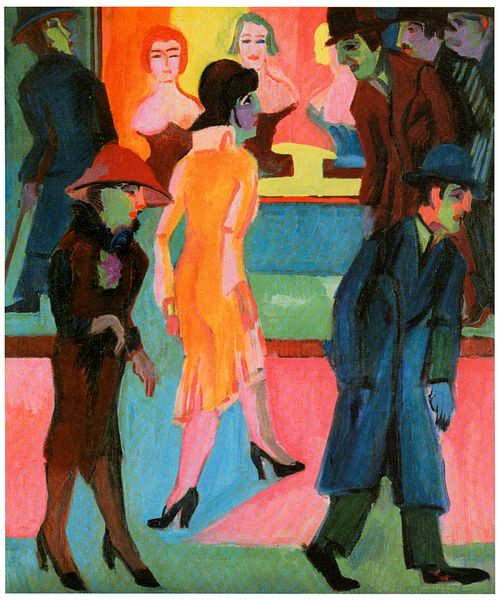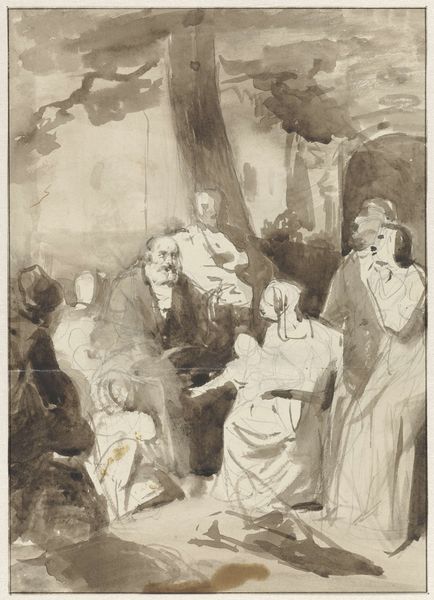
painting, oil-paint
#
painting
#
oil-paint
#
figuration
#
oil painting
#
ashcan-school
#
genre-painting
#
street
#
realism
Dimensions: 76.84 x 63.5 cm
Copyright: Public domain
Curator: George Luks painted "St. Botolph Street" in 1922, capturing an everyday urban scene with his signature realist style. It’s an oil painting currently held in a private collection. What are your first impressions? Editor: My immediate response is how the painting seems to glow from within. The light from those doorways is practically spilling onto the street and figures. It has a tangible, almost theatrical quality. I wonder what kind of materiality achieves that effect. Curator: Absolutely, it’s worth considering the broader artistic and social context. Luks, a prominent member of the Ashcan School, was dedicated to portraying urban life with raw honesty. He actively confronted the rigid boundaries that excluded depictions of everyday people and scenes. He gave space and visibility to what was ignored and actively demeaned. Editor: And this brings us to process and the materials. Given the speed and energy implied by his brushstrokes, I'd bet Luks employed a direct painting technique. We see these visible, textured layers, built upon each other, which indicates a level of immediacy with his chosen medium. You get a feeling for how he handled that oil paint. It's almost gestural, really accentuating this almost visceral realness of working-class life. Curator: That's an interesting point regarding the gestural brushstrokes. It mirrors the figures within the artwork, each person engaged in conversations of their own on stoops. Considering the era, we might view these figures as participating in constructing identities and social solidarity within their neighborhoods. This challenges the art world's prevalent interest in idealised depictions of femininity. Editor: Thinking about that visibility, the doorways create this clear framing. Each offers a liminal zone – neither wholly private, nor totally public – acting as meeting place between industry and social interactions and shelter and exchange. And of course, what about the surface the piece is painted on. Is this canvas? I want to think of what this support gives to its stability but also what material and labour went into this also. Curator: That's right, framing those doorways within an economy of place and power helps one to read beyond the aesthetic, bringing social dynamics to the forefront. The raw energy translates to its contemporary viewer the daily existence of these individuals. Editor: Ultimately, it invites us to consider how the artist translated these transient moments into something enduring with simple application of materials. Curator: I appreciate you calling attention to both the physicality of its construction and its social presence in relation to place, especially because these observations encourage dialogues that acknowledge class and representation.
Comments
No comments
Be the first to comment and join the conversation on the ultimate creative platform.
